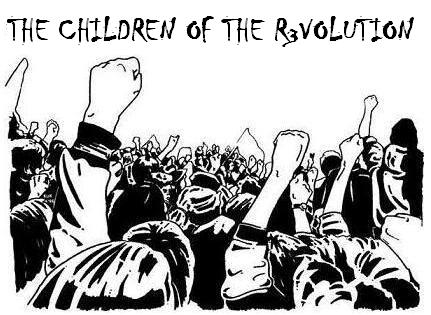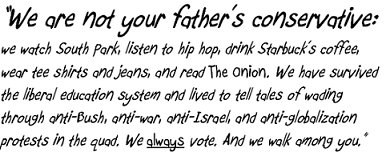
There has been an undeniable campaign on the part of some segments of the media and even our political establishment since the mid-90s to paint the Iranian theocracy as a functioning democracy, open and fair, simply with a traditional, local flair not unlike the British constitutional monarchy. This effort to take the edge off of Iran’s image is certainly the result of a political agenda. During the late 1990s, when the much-touted reformist president Khatami was elected in Iran, a serious and perhaps overly enthusiastic overture was made by the Clinton administration to renew diplomatic relations after a 20 year period of hostility. These overtures amounted largely to the US giving away the farm while the Iranian regime made token gestures of goodwill, such as inviting American tourism. Among the Clinton administration’s good faith measures to induce Iranian openness: apologizing for the Shah’s US-backed coup, relaxation of food and medical exports to Iran and allowing entry of an Iranian professional wrestling team to compete in the United States. The Clinton administration also privately considered rescinding its executive order identifying Iran as a state-sponsor of terrorism and a rogue state. What did the US get in return? A refusal by President Khatami to apologize for the taking of American hostages in 1979, a demand from Ayatollah Khamenei for the US to withdraw its support for Israel, end the 1995 sanctions imposed on the country, and cease its claims that Iran was developing nuclear weaponry, among other things. A lopsided exchange, to be sure. Made all the more tragic by the attacks of September 11, launched by radical Islamic extremists of the sort that Iran had long been providing enthusiastic material and financial support for.
The effort that was underway by the media and some politicians to soften the tone against the Iranian regime, particularly when talking about the legitimacy of its elections, has more or less come to and end with the results of the recent presidential election. According to the Supreme Council (the arm of the absolute rulers of Iran, the all-powerful Mujtahids of the Assembly of Experts), Mahmoud Ahmedinejad has been re-elected in a landslide. Reformist candidate Mir-Hossein Mousavi has petitioned the Supreme Council for an investigation of fraud after sustained protests in the streets of Tehran from his supporters that were violently suppressed. While the theocratic regime goes through the dog-and-pony show of investigating the claims of fraud for its Western audience, the inevitable result will be a retention of Ahmedinejad as president and a continuation of the hard-line tone in defiance of President Obama’s outreach.
Should we be surprised? Certainly it seems like the media was taken aback, after days of touting the elections as a proving ground for Obama’s new policy of openness to the Muslim world. Many networks reported dreamily about the possibility of an upheaval in the country brought about by the people of Iran in defiance of the mullahs. It has all been a comical farce, as no democratic government can be legitimate as long as it institutionalizes a body that can unilaterally and autocratically overturn the will of the people on a whim. Iran has never been a real democracy. It cleverly retains the trappings of democracy as a smoke-screen for the West, who have at times taken the bait hook, line and sinker. But presidential candidates are hand-picked by the Supreme Council, which also tallies the votes. As the great thug Josef Stalin observed, it isn’t the voting that matters, but who does the counting. The only way a “reformer” gets elected president of Iran is if the Supreme Council wishes it to be so, and if that be the case, the West must ask itself why? To project an image for the benefit of the West, to provide misdirection to Western leaders (that results in Clintonesque generosities without Iranian reciprocation), to satisfy a young, restive Iranian populace?
In this election, however, the theocrats chose to retain a hard-liner, which also sends a message intended for Western audiences. Whether they use that hard-liner for the jingoistic rhetoric associated with him while pursuing a softer line remains to be seen. It certainly does not bode well for President Obama’s hopeful tone on Iranian relations, and it bodes even worse for the Iranian people. The media has lost its battle to portray a “people’s Iran” as well, and is seeking to save face by speculating as to whether the disenfranchised Iranian citizens will challenge the power of the mullahs. One thing is certain: this election has reminded us of the real Iran, as it has always been, regardless of the West’s projections upon it.







1 comment:
It used to be that watching the news was simple and informative. Now you have to watch it with a grain of salt to weed out opinion and senationalism. Makes it very tiring.
I once thought of backing a start-up news organization that focused on just the facts, and neutrality. Unfortunately, I quickly realized the majority of today's society doesn't want that. So I went back to being tired and frustrated at the "news"
Post a Comment